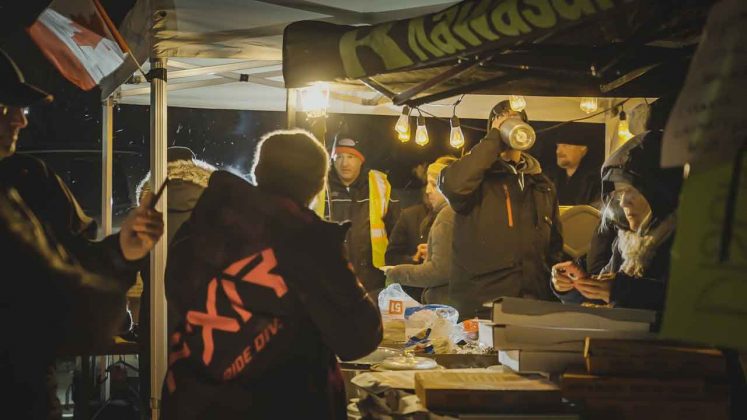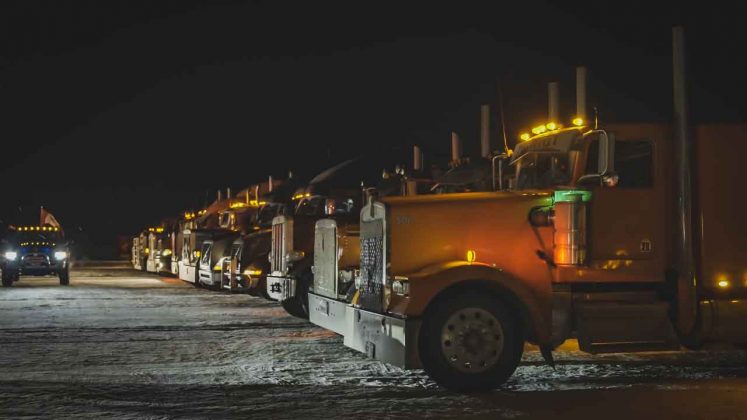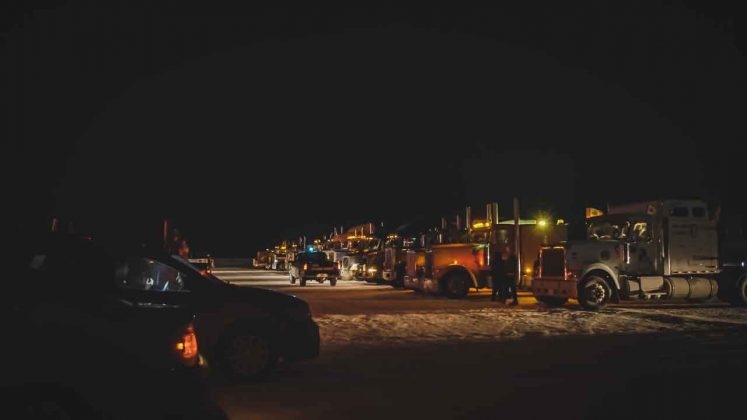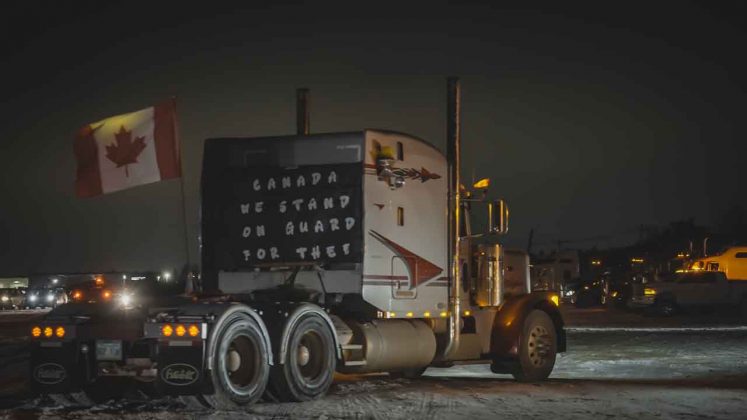THUNDER BAY – NEWS – The Freedom Convoy rolled into Thunder Bay at about 5:30 PM on January 26th. There were about 500 vehicles in the convoy.
While numbers of 50,000 transport trucks were being talked about on social media, that number according to the group is the total which will arrive in Ottawa on Saturday.
In Thunder Bay, there were about 200 trucks, and about 300 other vehicles in the convoy which departed the city on Thursday morning.
This convoy has captured a moment in time in Canada.
Departing from Prince Rupert on the west coast of British Columbia the convoy has been greeted by large numbers of Canadians as it has made its way east.
The Freedom Convoy has attracted a lot of attention as it has continued across Western Canada into Ontario. That large stage has also brought in some who appear to have their own agendas.
In Thunder Bay last night, the NetNewsLedger video crew sought to gather a sense of why the participants in the convoy are so passionate about the cause they are on.
There are reports of other media crews being insulted, and reporters feeling threatened. That is something sadly becoming all too common in recent years. The role of reporters on the ground is to gather the story and report on it. That is what NetNewsLedger sought to do and did.
Group organizers have stated that they are not separatists nor are they terrorists.
After months of lockdowns, restrictions, and mandates under COVID-19 many people are very frustrated and simply want life to return to normal.
The stated goal is to arrive in Ottawa and stay there until the government lifts the restrictions.
Supply chain issues and inflation top list of business worries for 2022
“We’re already seeing major delays for necessary supplies. Two years into the pandemic, it’s time for governments to stop enacting rules that create unnecessary roadblocks to small business recovery and instead focus on helping them address these problems,” added Corinne Pohlmann, Senior Vice-President of National Affairs at CFIB.
The Canadian Federation for Independent Business is stating that “Rising prices (81 per cent) and supply chain challenges (70 per cent) were the biggest issues facing businesses heading into 2022 in CFIB’s latest survey. This latest hurdle places even more pressure on an already strained system following the strike at the Port of Montreal and congestion at the Port of Vancouver, flooding that cut off roads and trains from British-Columbia in November, and other delays throughout 2021. In addition, the transportation industry has been one of the hardest hit by labour shortages, with 68 per cent of businesses in the sector unable to find enough staff for current operations or to expand, according to a report CFIB published in December”.
In turn, small businesses are predicting historically-high price increases of 4.4 per cent over the next 12 months on CFIB’s mid-January Business Barometer. Price increases of this magnitude are likely to hurt small businesses’ ability to compete at a time when many are still struggling to get back to normal sales. The latest results on CFIB’s Small Business Recovery Dashboard show that only 30 per cent are making normal sales (down from 36 per cent in November), 42 per cent are fully staffed (down from 45 per cent in November) and 65 per cent are fully open (down from 78 per cent in November).
















